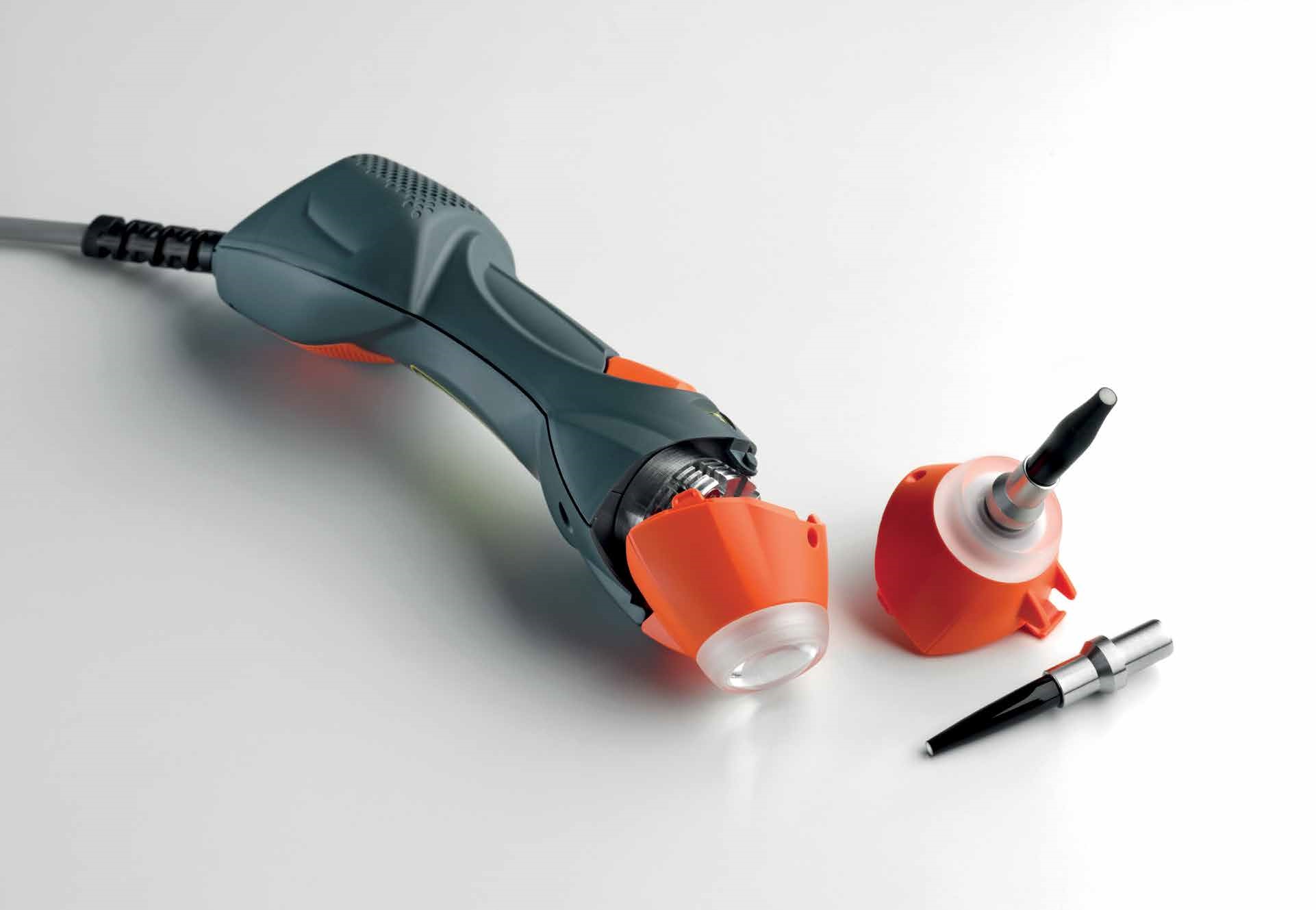In the world of alternative therapies, acupuncture has long been revered for its ability to alleviate pain and promote holistic healing. However, for those who are needle-phobic, traditional acupuncture may not be the most appealing option. Enter laser acupuncture, or laserpuncture. This innovative technique offers all the benefits of acupuncture without the use of needles, making it a game-changer for individuals seeking pain-free treatment.
What is Laserpuncture?
Laser acupuncture is a non-invasive procedure that uses low intensity laser therapy. This involves stimulating specific needle acupuncture points on the body using laser wavelengths. However, unlike traditional acupuncture there are no needles involved. Instead, laser acupuncture uses low intensity laser light to achieve the same therapeutic effectiveness.
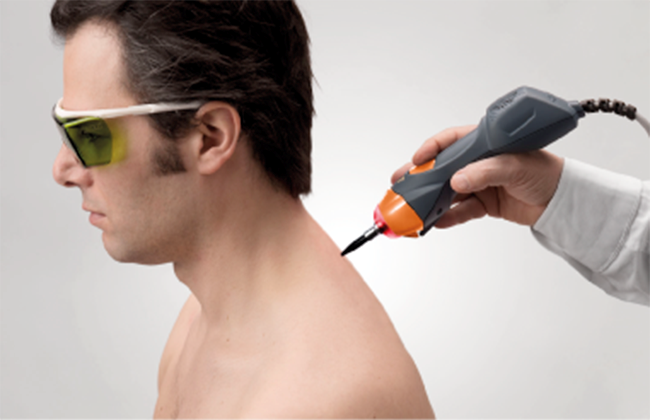
The laser light penetrates the skin and stimulates traditional acupuncture points, resulting in the release of endorphins, improved blood circulation, and the activation of the body’s natural healing mechanisms. The practitioner uses a low level laser therapy (LLLT) device designed to treat the musculoskeletal system.
The Benefits of Laserpuncture
Laser acupuncture offers numerous benefits for those seeking pain relief and holistic healing. Some of the key advantages include:
-
- It is a painless treatment:Laserpuncture is completely pain free. Most patients report feeling the benefits of laser acupuncture without the use of needles almost immediately. Some report a shift in energy. This is a great way to attract patients who may have needle phobia
- It is non-invasive : Laserpuncture treatment does not involve piercing with needles. The risk of infection is reduced because the skin has not been pierced by the laser. Practitioners can treat points that they might not be generally accessible due to sensitivity or age.
- It is fast: With the laser treatment, clinicians simply shine the light on the desired point for a few seconds (depending on the strength and output of the laser) and move to the next point. This type of low level laser therapy is fast and easy. The time of treatment with a super-pulsed type laser is a few seconds compared with acupuncture where the needle must be left in for 20 – 30 minutes. Not only will patients appreciate the quick healing treatment, but practitioners can see more patients in less time.
- It induces both central and peripheral analgesia: Laser acupuncture achieves superior results by not only stimulating the body at a cellular level, but also generating physiological effects in the brain. Laserpuncture achieves pain relief through a dual mechanism. Not only does it soothe the irritated nerves, but it also blocks pain by releasing high levels of painkillers, such as endorphins and enkephalin, in the brain and adrenal gland.
Laserpuncture Vs. Traditional Acupuncture
-
Laser acupuncture and traditional acupuncture share the same goal of promoting holistic healing and pain relief, but they differ in their approach. While traditional acupuncture involves the insertion of needles into specific acupoints, laser acupuncture achieves the same effect using light wavelengths.
One advantage of laser acupuncture over traditional acupuncture is the absence of needles. This makes laser acupuncture more appealing for individuals who are afraid of needles or find the idea of acupuncture uncomfortable. Additionally, laser acupuncture eliminates the risk of pain, bleeding, and infection associated with needle insertion. The laser acupuncture tip can also be easily cleaned and is designed for reuse, so practitioners can save on not having to buy disposable needles for each patient.
Another difference between laser acupuncture and traditional acupuncture is the level of stimulation. Traditional acupuncture relies on manual manipulation of the needles to generate stimulation, while laser acupuncture provides a consistent and controlled level of stimulation using laser wavelengths. This makes laser acupuncture a more precise and targeted treatment option.
Comparison: Laserpuncture vs. Traditional Acupuncture
Feature Laserpuncture Traditional Acupuncture Needles Used? No Yes Pain Level Painless Mild discomfort possible Risk of Infection None Minimal, if sterile needles are used Effectiveness Similar for some conditions Proven for many conditions Best For Needle-phobic patients, children, sensitive individuals Those comfortable with needles Conditions Treated with Laser Acupuncture
Laser acupuncture has been shown to be effective in treating a wide range of conditions. Some of the common conditions include:
- Pain Relief: Laser acupuncture has been used successfully to alleviate chronic pain caused by conditions such as arthritis, back pain, fibromyalgia, and migraines. The gentle stimulation of the acupoints helps has an anti-inflammatory effect, relieves muscle tension, and promotes pain relief.
- Musculoskeletal Disorders: Musculoskeletal disorders, such as back pain, neck pain, and joint pain can be effectively treated with laser acupuncture. The laser wavelengths stimulate the acupoints, improving blood circulation and promoting the healing of damaged tissues.
- Stress and Anxiety: Laser acupuncture has a calming effect on the nervous system, making it an effective treatment for stress and anxiety. The stimulation of specific acupoints helps to regulate the release of stress hormones and promote a sense of relaxation and well-being.
- Smoking Cessation & Addiction Treatment: Laser acupuncture stimulates points associated with cravings and withdrawal symptoms. Like acupuncture, the therapy may help reduce nicotine addiction naturally.
- Allergies & Sinus Issues: Laser acupuncture has been used to reduce symptoms associated with sinusitis, hay fever, and asthma. The therapeutic effects include reduction in inflammation of the nasal passages.
- Digestive & Metabolic Disorders: Laser acupuncture can help with irritable bowel syndrome (IBS), gastritis, and metabolic imbalances.
- Immune System Support: The treatment using low intensity laser irradiation boosts immunity, promotes wound healing, and aids post-surgical recovery.
The Science Behind Laser Acupuncture
The therapeutic effects of laserpuncture can be explained by several scientific mechanisms. When the laser is applied to acupoints, they stimulate the nerve endings, triggering a series of physiological responses in the body.
One of the key mechanisms behind laser acupuncture is the release of endorphins. Endorphins are the body’s natural painkillers and mood enhancers. The stimulation of the acupoints during laser acupuncture promotes the release of endorphins, helping to alleviate pain and improve mood.
Additionally, laserpuncture improves blood circulation in the treated area. The laser wavelengths stimulate the microcirculation, increasing the supply of oxygen and nutrients to the tissues. This enhanced blood flow promotes healing and reduces inflammation.
Another scientific mechanism behind laser acupuncture is the activation of the body’s natural healing mechanisms. The stimulation of the acupoints during laser acupuncture triggers a cascade of biochemical reactions in the body, promoting cellular repair, tissue regeneration, and overall wellness.
Dr. Viliana evaluated the safety of laserpuncture treatment using MLS® laser in terms of adverse reactions and side effects1. The study also evaluated the clinical efficacy of the treatment and patient satisfaction. 67 adult patients who had acute or chronic musculoskeletal conditions, including neck pain, low back pain, knee pain, and shoulder arthrosis/arthritis were treated.
Participants were treated 3 times per week, with a total of 6 sessions completed. The acupoints were selected based on the methods of traditional acupuncture.
At the end of the study, 80.5% of patients reported they were “satisfied/very satisfied” with their MLS® laserpuncture treatment. No patient had general adverse or skin reactions. These findings suggest that laserpuncture has significant potential for treating musculoskeletal-related pain.
How Laserpuncture Works
Use of Low-Level Laser
- Low intensity laser irradiation is directed at specific acupuncture points.
- The laser emits low-energy photons that penetrate the skin and interact with cells.
Cellular Stimulation
- The laser’s energy stimulates mitochondria, boosting ATP (energy) production in cells.
- This enhances cellular repair, reduces inflammation, and improves circulation.
Bioenergetic Effect
- According to Traditional Chinese Medicine (TCM), acupuncture points are connected to energy pathways called meridians.
- Laser stimulation helps balance the body’s Qi (vital energy), similar to needle acupuncture.
Pain-Free and Non-Invasive
- Since there is no skin penetration, laserpuncture is suitable for individuals afraid of needles, children, and those with sensitive skin.
What is the Most Effective Laserpuncture Device?
According to research, dual laser therapy is superior to traditional low-level laser therapy when it comes to laserpuncture. The dual laser, also known as the Multi-wave Locked System (MLS), combines two lasers with different light wavelengths. The 808nm continuous wavelength delivers prevailing anti-inflammatory benefits. The 905nm pulsed wavelength has predominantly analgesic effects. Both effects are crucial for achieving relief for acute and chronic musculoskeletal conditions.
MLS Mphi 75
The Mphi 75 is a low level laser therapy device. Manufactured by ASA Laser Italy, it uses two synchronised lasers called MLS with a peak power of 75W. This high peak power accelerates the effects of laserpuncture. The protocols for laser acupuncture points are built into the software for this laser device.
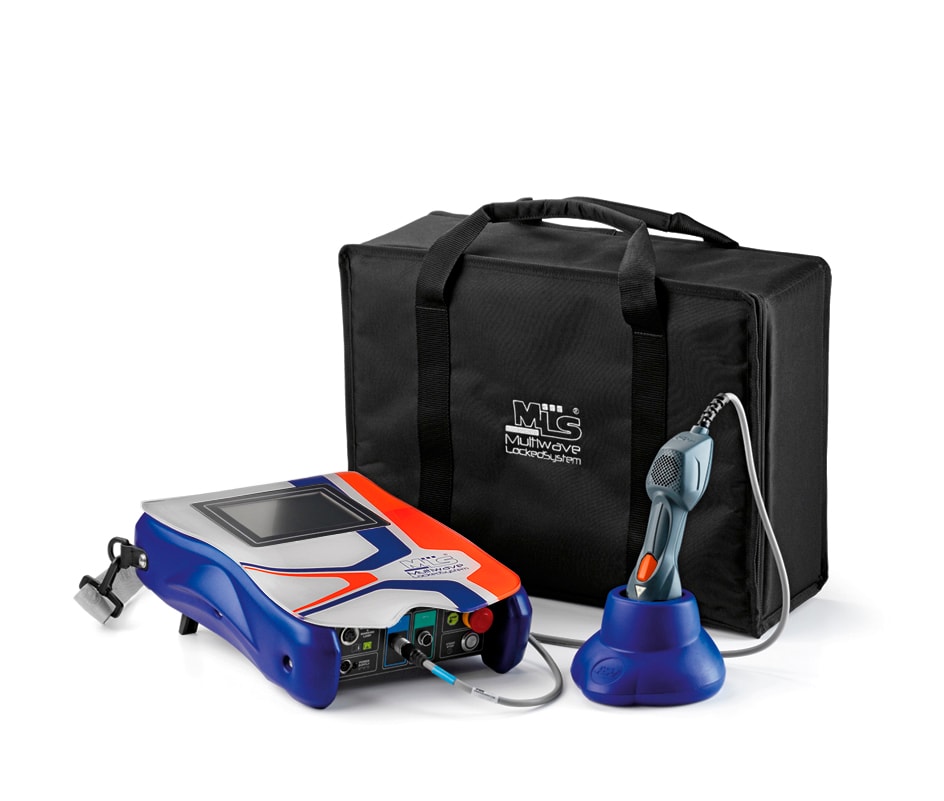
Mphi 75 low level laser therapy device
The Mphi 75 also comes with software that offers built in protocols for a large range of laser treatments and pathologies such as joint pain, neck pain and muscle spasm making it much easier for practitioners to diagnose and treat patients. They can follow these scientifically-backed preset protocols to effectively treat patients.
The LLLT laser is also designed to provide anti-inflammatory effects was well as biostimulation to promote healing.
How to Treat a Patient with Laser Acupuncture
Once a practitioner has diagnosed the patient and chosen the correct acupoints, practitioners use the laserpuncture device for approximately 15 – 60 seconds per point. Most practitioners report having successful treatment results in 25 seconds, especially with the Mphi 75 including pain reduction. Acupoints that require deeper needling, like the legs and torso, may need longer treatment times. Ears, hands, and feet require a lower power density and less treatment time in clinical practice.
Any point of the body can be treated with the laser except near the eyes. Even if a patient has a wound or injury, laser acupuncture can still be applied to that area without any contraindications.
In particular, the Mphi 75 laser by ASA Laser Italy uses two synchronised lasers with a peak power of 75W. This high peak power accelerates the effects of laserpuncture. The Mphi 75 also comes with software that offers specific protocols for a large range of treatments and pathologies, making it much easier for practitioners to diagnose and treat patients. They can follow these scientifically-backed preset protocols to effectively treat patients.
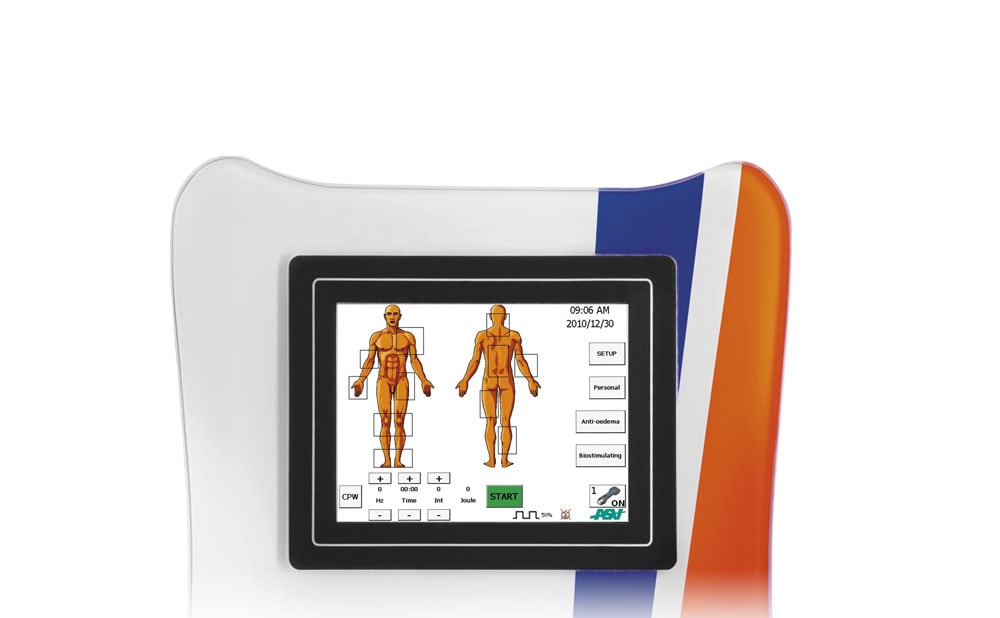
Laser treatment is safe for all areas of the body except the eyesLaser treatment is safe for all areas of the body except the eyes
Who Uses Laserpuncture?
- Acupuncturists
- Physiotherapists
- Chiropractors
- Holistic & alternative medicine practitioners
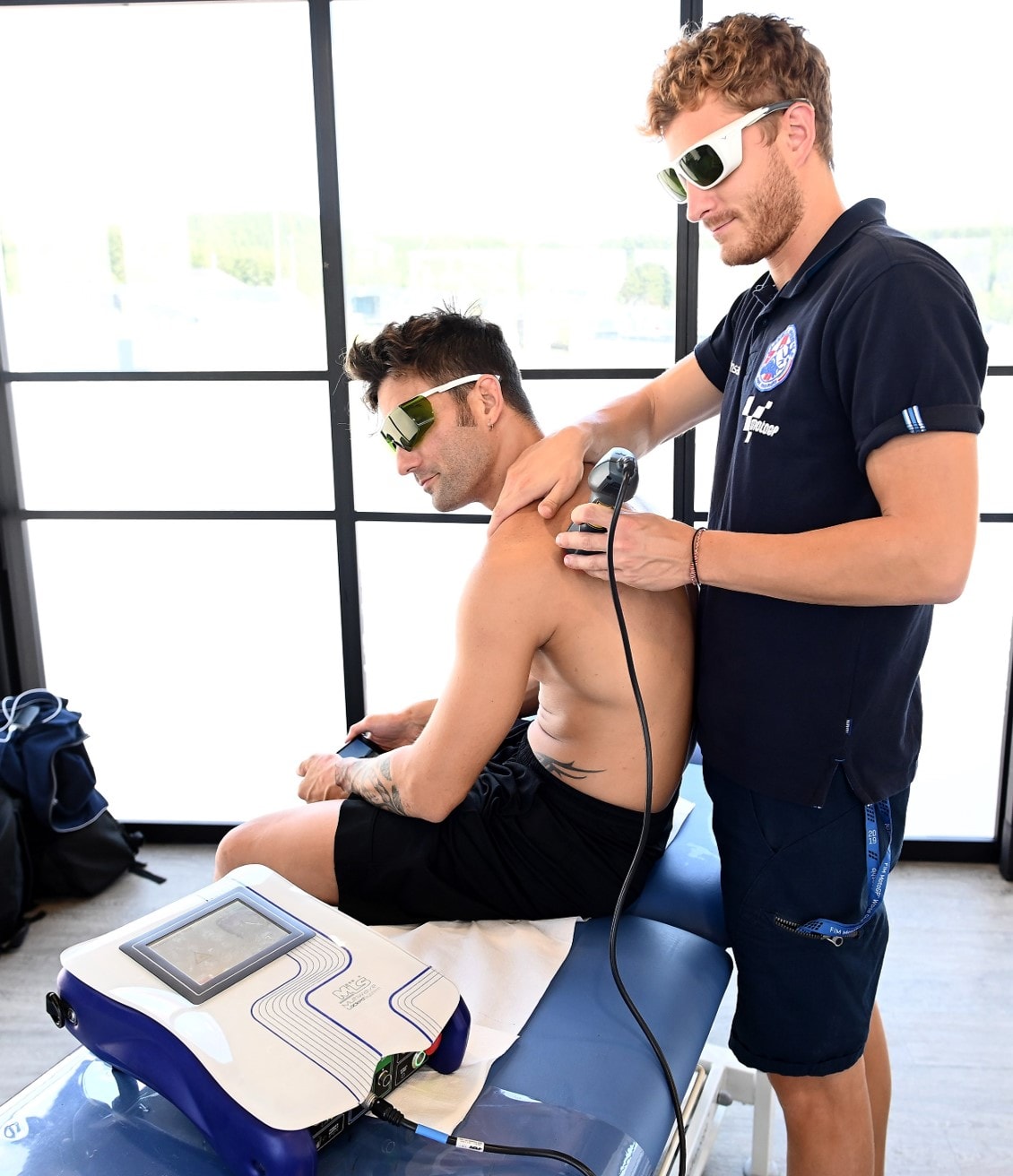
Laserpuncture
How to Treat a Patient with Laser Acupuncture
Once a practitioner has diagnosed the patient and chosen the correct acupoints, practitioners use the laserpuncture device for approximately 15 – 60 seconds per point. Most practitioners report having successful treatment results in 10 – 15 seconds, especially with the Mphi 75. Acupoints that require deeper needling, like the legs and torso, may need longer treatment times. Ears, hands, and feet require less treatment time.
Any point of the body can be treated with the laser except near the eyes. Even if a patient has a wound or injury, laser acupuncture can still be applied to that area without any contraindications.
Laserpuncture is Here to Stay
The revolutionary benefits of laser acupuncture make it a popular treatment modality for many patients seeking holistic healing and pain relief. The ability to heal the body naturally without needles is one of the biggest advantages of laserpuncture to traditional acupuncture. Laserpuncture stimulates endorphin production and blood circulation, helping the body to heal naturally.
There are many scientific research articles showcasing the efficacy of laserpuncture, with the MLS Mphi 75 laser a particularly effective solution. Practitioners currently using acupuncture in clinical practice or who are looking for a painless treatment alternative with few adverse effects are highly recommended to add laserpuncture to their suite of services. Laser acupuncture works; it is a safe, effective, and efficient treatment modality that the latest technological advancements have made possible!
To learn how you can revolutionise your practice with the latest treatment technology, download our free eBook, ‘Revolutionise Your Practice with MLS Laser Therapy’.
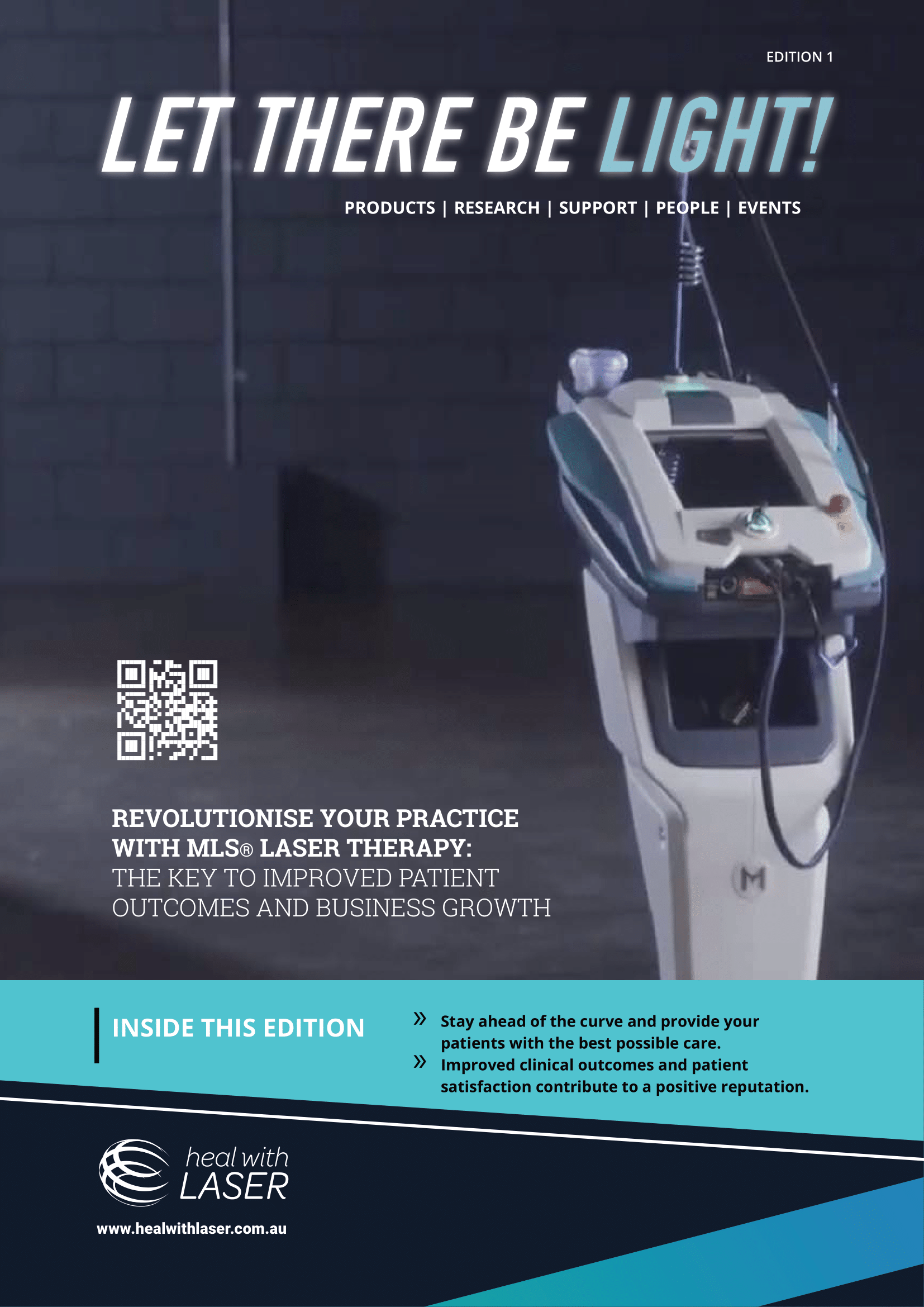
Related Research

